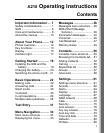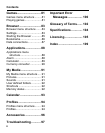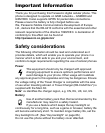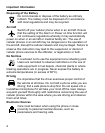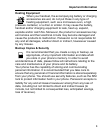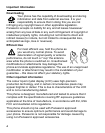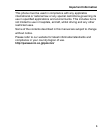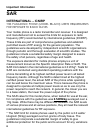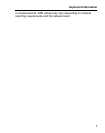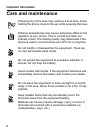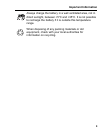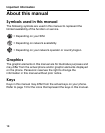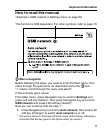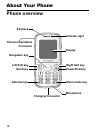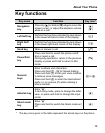
6
Important Information
SAR
INTERNATIONAL – ICNIRP
THIS PANASONIC PHONE (MODEL EB-A210) MEETS REQUIREMENTS
FOR EXPOSURE TO RADIO WAVES
Your mobile phone is a radio transmitter and receiver. It is designed
and manufactured not to exceed the limits for exposure to radio
frequency (RF) recommended by international guidelines (ICNIRP).
These limits are part of comprehensive guidelines and establish
permitted levels of RF energy for the general population. The
guidelines were developed by independent scientific organisations
through periodic and thorough evaluation of scientific studies. The
guidelines include a substantial safety margin designed to assure
the safety of all persons, regardless of age and health.
The exposure standard for mobile phones employs a unit of
measurement known as the Specific Absorption Rate or SAR. The
SAR limit stated in the international guidelines is 2.0 W/kg*. Tests for
SAR are conducted using standard operating positions with the
phone transmitting at its highest certified power level in all tested
frequency bands. Although the SAR is determined at the highest
certified power level, the actual SAR of the phone while operating
can be well below the maximum value. This is because the phone is
designed to operate at multiple power levels so as to use only the
power required to reach the network. In general, the closer you are
to a base station, the lower the power output of the phone.
The SAR value for this model phone, when tested for use at the ear,
for compliance with the guidelines was
0.549W/kg
averaged over a
10g mass. While there may be differences between the SAR levels
of various phones and at various positions, they all meet the relevant
international guidelines for RF exposure.
* The SAR limit for mobile phones used by the public is 2.0 watts/
kilogram (W/kg) averaged over ten grams of body tissue. The
guidelines incorporate a substantial margin of safety to give
additional protection for the public and to account for any variations




